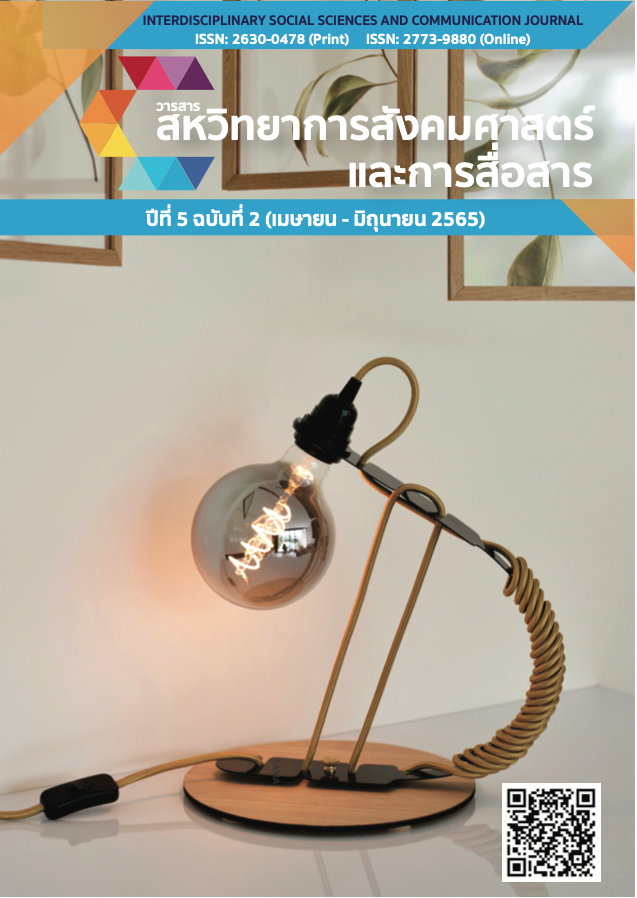รูปแบบภาวะผู้นำที่ส่งผลต่อความคิดสร้างสรรค์ของพนักงาน: กรณีศึกษาบริษัทแห่งหนึ่งในอุตสาหกรรมการผลิตชิ้นส่วนเครื่องใช้ไฟฟ้า
Main Article Content
บทคัดย่อ
การวิจัยนี้มีวัตถุประสงค์เพื่อศึกษารูปแบบภาวะผู้นำที่ส่งผลต่อความคิดสร้างสรรค์ของพนักงานบริษัทผู้ผลิตชิ้นส่วนเครื่องใช้ไฟฟ้า กลุ่มตัวอย่างที่ใช้ในการวิจัยนี้ คือ พนักงานบริษัทผู้ผลิตชิ้นส่วนเครื่องใช้ไฟฟ้าขนาดใหญ่แห่งหนึ่ง จำนวน 400 คน ซึ่งใช้วิธีการสุ่มตัวอย่างแบบแบ่งชั้นภูมิตามสัดส่วนของพนักงานแต่ละแผนก โดยมีแบบสอบถามเป็นเครื่องมือที่ใช้ในการเก็บรวบรวมข้อมูล เพื่อนำมาวิเคราะห์ข้อมูล ได้แก่ ค่าความถี่ ค่าร้อยละ ค่าเฉลี่ย และส่วนเบี่ยงเบนมาตรฐาน และทดสอบสมมติฐานด้วยแบบจำลองสมการโครงสร้าง
ผลการวิจัยพบว่า แบบจำลองสมการโครงสร้างมีความสอดคล้องกลมกลืนกับข้อมูลเชิงประจักษ์ โดยมีค่า 2 เท่ากับ 97.86 p-value เท่ากับ 0.013 2/df เท่ากับ 1.418 GFI เท่ากับ 0.969 AGFI เท่ากับ 0.947 CFI เท่ากับ 0.987 NFI เท่ากับ 0.957 และ RMSEA เท่ากับ 0.032 ซึ่งผ่านตามเกณฑ์ที่กำหนดไว้ และผลการทดสอบสมมติฐานพบว่า ภาวะผู้นำแบบมุ่งคนส่งผลต่อความคิดสร้างสรรค์ของพนักงานบริษัทผู้ผลิตชิ้นส่วนเครื่องใช้ไฟฟ้า อย่างมีนัยสำคัญทางสถิติที่ระดับ 0.05 แต่ภาวะผู้นำแบบมุ่ง และภาวะผู้นำแบบมุ่งทีม ไม่ส่งผลต่อความคิดสร้างสรรค์ของพนักงานบริษัทผู้ผลิตชิ้นส่วนเครื่องใช้ไฟฟ้า ซึ่งแบบจำลองสมการโครงสร้างมีอำนาจในการพยากรณ์ร้อยละ 19
Article Details

อนุญาตภายใต้เงื่อนไข Creative Commons Attribution-NonCommercial-NoDerivatives 4.0 International License.
** ข้อความ ข้อคิดเห็น หรือข้อค้นพบ ในวารสารสหวิทยาการสังคมศาสตร์และการสื่อสารเป็นของผู้เขียน ซึ่งจะต้องรับผิดชอบต่อผลทางกฎหมายใด ๆ ที่อาจเกิดขึ้นจากบทความและงานวิจัยนั้น ๆ โดยมิใช่ความรับผิดชอบของคณะนิเทศศาสตร์ มหาวิทยาลัยราชภัฏรำไพพรรณี **
เอกสารอ้างอิง
Al Harbi, J., Alarifi, S., & Mosbah, A. (2019). Transformation leadership and creativity: Effects of employees pyschological empowerment and intrinsic motivation. Personnel Review, 48(5), 1082-1099.
Cheng, C., Cao, L., Zhong, H., He, Y., & Qian, J. (2019). The Influence of Leader Encouragement of Creativity on Innovation Speed: Findings from SEM and fsQCA. Sustainability, 11, 2693, 2-17.
Gupta, V., Singh, S., Kumar, S., & Bhattacharya, A. (2012). Linking Leadership to Employee Creativity: A Study of Indian R&D Laboratories. Indian Journal of Industrial Relations, 48(1), 120-136.
Hughes, D., Lee, A., Tian, A., Newman, A., & Legood, A. (2018). Leadership, creativity, and innovation: A critical review and practical recommendations. The Leadership Quarterly, 29(5), 1-88.
Jacoby, J. (1968). Creative Ability of Task‐Oriented Versus Person‐Oriented Leaders. Journal of Creativity Behavior, 2(4), 249-253.
Khattak, S., Batool, S., & Haider, M. (2017). Relationship of Leadership Styles and Employee Creativity: A Mediating Role of Creative Self-efficacy and Moderating Role of Organizational Climate. Pakistan Journal of Commerce and Social Sciences, 11(2), 698-719.
Koeslag-Kreunen, M., Bossche, P., Hoven, M., Klink, M., & Gijselaers, W. (2018). When Leadership Powers Team Learning: A Meta-Analysis. Small Group Research, 49(4), 475-513.
Northhouse, P. (2016). Leadership: Theory and Practice (7th ed.). Thousand Oaks, California: SAGE.
Sirkwoo, J. (2015). Leading Employee Creativity: The Relationship Between Leadership Styles and Employee Creativity. Review of General Management, 21(1), 17-28.
Yukl, G. (1989). Managerial Leadership: A Review of Theory and Research. Journal of Management, 15(2), 251-289.
ชัยเสฏฐ์ พรหมศรี. (2561). ภาวะผู้นำ สำหรับผู้บริหารองค์การ: แนวคิด ทฤษฎีและกรณีศึกษา. กรุงเทพฯ: ปัญญาชน.


